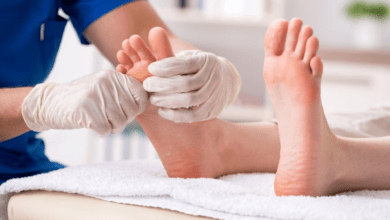Types Of Mood Disorders

Bipolar I disorder
Mania, or mood disorders, is part of what makes up bipolar mania. During this period, an individual feels elevated with increased energy, self-confidence, and optimism about life. They may have lots of ideas too, and be able to execute them quickly. All of these are characteristics of manic behavior.
The key feature of bipolar mania is an enormous increase in activity versus normal. This can include spending, shopping, cooking, building, planning, taking tours, going out, etc. The person often cannot relax and rest since they are excited by their activities.
All of this activity costs money (hence the name “costly lifestyle”), takes time, needs motivation, and uses resources. It also does not help anyone else get ready for work or school.
When people are manic, they are unable to use power buttons such as restraint, sleep, exercise, and medication. Instead, something intense happens that then leads to depression.
Intense feelings result in aggressive behavior during manic phases. In fact, there has been evidence that long-term manic patients are at risk for suicide. There is a really high likelihood of using drugs or alcohol to manage the symptoms of mania.
To avoid this risk, it is recommended that individuals remain sober and safe.
These cycles last for years and can be hard to recover from. People do become stable again, but it takes a lot of effort over many months
Bipolar II disorder

Many people view bipolar mood disorders as something that only affects those who are mentally unstable. But emotional instability can be a normal part of growing up – even if it is not diagnosed until much later in life.
For instance, many adults remain emotionally immature long after they have grown physically through age 35 or more. Developing healthy relationships remains a work-in-progress for most of us throughout our lives.
It is also commonly believed that symptoms of mental illness such as depression and anxiety cannot be put down to lifestyle factors alone. This idea comes from a lack of knowledge about how all parts of the brain interact with each other and what happens when there is a conflict between them (the nervous system).
However, everything you eat plays a role in your health including your mood disorders. Some foods provide antioxidants which help keep your mind sharp. Others prevent nerve degeneration and may help improve memory. Some mood disorders in children also occurs.
Finally, exercise is important for improving overall health and happiness, but it also helps relieve stress and relax the body and mind. In fact, exercise is one of the top ways to calm down elevated heart rate, bring back a sense of balance to the day, and strengthen the immune system.
Thus, starting an exercise routine could help solve some problems related to mood swings and depression. It could also aid sleep onset and maintenance, quality, and duration.
READ ALSO: https://articlebelt.com/8-things-kids-can-say-and-do-to-stop-bullying/
Major depressive disorder

People with major depressive disorder experience at least two core symptoms lasting at least 2 weeks. These include low mood, late insomnia, difficulty concentrating, fatigue, and low self-esteem. Many people also have psychosocial problems such as job loss, family issues, or relationship difficulties.
People may feel many different emotions during a depression, including anxiety, fear, guilt, anger, love, and happiness.
The severity of their impairment does not depend on how they feel, but on how much life functioning is affected. Symptoms must be present for more than half an hour to qualify as pathological.
Depression can be mild to severe. If someone has only mildly depressed feelings, they might be referred to by doctors as having “reactive depression.” This type of depression occurs after a stressful event, like losing a job or partner. It can remain chronic without treatment.
There are several ways to determine if someone has depression: through their response to stress or questioning, their overall health, and medical tests. The best way to identify depression is through asking the person themselves whether they feel sad or empty most days.
Another form of depression is manic depression. A diagnosis of mania depends on both energy and elation being present in the person, along with poor judgment and risk taking behavior. In bipolar II disorder, hypomanic episodes are less severe than manias, but still fall under the category of elevated mood disorders.
——paroxysm
Dysthymic disorder
Dysthymia (duh-THIH’-mee) is a habitually low mood disorders that lasts for years. People with dysthymic disorder experience depressive symptoms often along with feelings of hopelessness or pessimism. An individual may feel constantly overwhelmed or exhausted.
There are many ways this condition can be diagnosed, but it usually involves questions about how you have felt over time and whether you have been able to cheer up even when you wanted to.
It also depends on how your personality is formed. It is very common for people to go through life in a depressed way once they learn of this diagnosis.
You will need to talk about their mental health concerns and what has made you feel this way today. Asking permission to do so comes first.
Pervasive development disorder

This is an illness that affects how someone thinks, their behavior, and how they experience events and activities in life. Someone with this condition can’t cope with things that happen and may avoid situations or people that they normally would not.
This problem was first recognized and described by psychologists in the late 1960s and early 1970s. However, it was considered uncommon and only briefly lived over weeks to months. But now there are ways to treat those symptoms.
Over 90% of these treatments are psychological, which means we have better tools to help us deal with stress and maintain our mood disorders. It also helps us understand what’s normal about ourselves and why.
These treatments include cognitive behavioral therapy (CBT), social support from family and friends, and medications called antidepressants. CBT for manic disorders focuses on specific behaviors associated with bipolar II mania, like work or self-care. Social support treats both depression and anxiety.
Antidepressants are usually prescribed along with psychotherapy. They are used either as treatment for current depressive symptoms or as prevention against future episodes. Menopause symptoms provide another example. There are many different options for managing menopausal symptoms; however, estrogen replacement therapy remains the mainstay of management.
Alcohol use disorder

If you suffer from alcohol use disorder (AUD), you may have difficulty controlling your drinking. Your ability to control yourself will be affecting by how much you drink, how often you drink it, and what you drink.
Many people with AUD begin as early adopters, which means they started drinking before age 18. It also usually goes along with other risky behaviors like smoking, addiction to drugs or gambling.
Once someone becomes an alcoholic, he/she is at risk for developing mental health issues such as depression, anxiety disorders and personality changes.
Symptoms vary considerably but there are certain symptoms that are common among those who suffer from AUD. These include blackouts, feeling unable to stop eating or swallowing food, uncontrollable urges to drink, compulsive drinking, reliance on alcohol to function, and inability to cope without drinking.
Medical professionals typically identify these symptoms as indicators of alcohol abuse. When a person stops using alcohol, he / she may produce new behaviors, perceptions and feelings.
To help identify possible alcohol use disorder, look for signs of dependency. Notice whether things tend to taste better when you drink. Also consider if products make you feel good or bad.
A way to reduce stress is taking a short break. However, this only works if you’re self-aware and aware of your limitations. Try making a list of everything you want to do and track your progress.
It’s easier to stay motivated
Substance use disorder

If you are an addict, there is hope. You can heal from this disease through rehabilitation treatment. In these treatments, you will be able to learn how to manage your addiction without relying on addictive substances or behaviors.
You will also likely meet other people who have faced similar problems and found a way to live without consuming drugs or drinking.
Your experience in rehab may even help you restore relationships that will be damage by your addictions.
However, before you seek treatment, it’s important to think about why you want to stop using alcohol or drug products. Research shows that naltrexone works very well for managing pain due to spinal cord injury.
This is because the medication reduces your need to engage in maladaptive habit patterns. It does not provide any high like you would get from opioids or nicotine.
Naltrexone may prevent you from getting low, but it cannot give you the feeling of being high again. This makes naltrexone a good option if you suffer from depression or anxiety.




